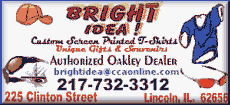 Yellow jackets are beneficial insects in the sense that they
pollinate plants and feed other insects and carrion (dead meat)
to their larvae. Many times they will prey on insects that we
identify as pests. Yellow jackets are beneficial insects in the sense that they
pollinate plants and feed other insects and carrion (dead meat)
to their larvae. Many times they will prey on insects that we
identify as pests.Unfortunately, their ability to sting makes
them a considerable health concern. Yellow jackets alone are
responsible for about half of all human insect stings. The
stings of social wasps, such as yellow jackets, have evolved as
a defense mechanism. The only purpose for the sting is to
inflict pain. Yellow jackets are easily provoked and, unlike
honeybees, can sting more than once. They will attack in force
if their nest is disturbed. Unless a person is allergic to
yellow jacket venom, stings are rarely life-threatening.

Yellow jackets are most frequently encountered when they
scavenge for food. Their habit of feeding on nectar and sugar
can create a nuisance. Yellow jackets are attracted to open cups
and cans of soda and other sweet liquids. They are also
attracted to open cans of garbage, bright flowery clothing and
floral-scented perfumes.
To reduce problems with yellow jackets, all outside garbage
cans must be kept clean and well-covered. Contact with the wasps
can be decreased by reducing these attractions at picnics and
other outings. In situations closer to home, the elimination of
overripe fruit from gardens and orchards will dramatically
decrease the number of scavenging yellow jackets. Having
gatherings indoors and using screens on windows will also help
avoid the problems.
There are a variety of traps on the market that claim to
attract yellow jackets. These traps are baited with the scent of
rotting fruit or other odors equally as appetizing to the yellow
jackets. It is questionable whether these traps can out-compete
the natural and man-made attractants described above. However,
it is certain that through proper sanitation and removal of
natural and man-made attractants, yellow jacket contact can be
reduced. However, in situations where the potential for repeated
contact exists, other management methods may be necessary. These
traps can also attract more yellow jackets if placed close to
the home or patio, so place them to attract the insects away
from where you'll be.
[to top of second column]
 |

Management of each species of yellow jacket differs because of their
nesting habits. Both species do not reuse their nests; therefore,
what was a problem this year may not occur next year.
Caulking cracks and crevices in structures in winter and early
spring, after the nests have died, will prevent German yellow
jackets from constructing nests inside buildings. Openings to active
nests should not be caulked.
Chemical control for ground-nesting yellow jackets consists of
drenching the exit hole with an approved insecticide, such as Sevin,
and plugging the hole with treated soil or cotton balls. Yellow
jackets that are not killed by the initial treatment will be killed
by chewing on the treated cotton ball or tunneling through the soil.
Yellow jacket entrance holes in buildings can be treated with
approved insecticide dusts. As the yellow jackets walk through the
dust, they pick it up on their legs and transport it into the nest.
When yellow jackets groom themselves, they ingest the dust on their
legs. It may take up to a week for the colony to die, and repeated
chemical applications may be necessary. When the entrance hole of an
active nest is in a building, the hole should not be plugged with
the insecticide or caulked. The yellow jackets may decide to chew
through the soft inside wall rather than chew through the
insecticide or caulking material.

Implement chemical control measures at dusk or dawn, when the
wasps are in their nest. Wear protective clothing when attempting to
eliminate the nests, such as long-sleeved jackets, gloves and pants.
Tape clothing to the wrists and ankles to prevent the wasps from
getting underneath the clothes. A bee veil or other enclosed form of
face and neck protection should also be worn. Yellow jackets will
defend their nest, so to avoid being attacked, use a flashlight
covered with red cellophane when applying the insecticide at night,
since yellow jackets are unable to see red.
[By
JOHN FULTON,
University of Illinois Extension, Logan County] |